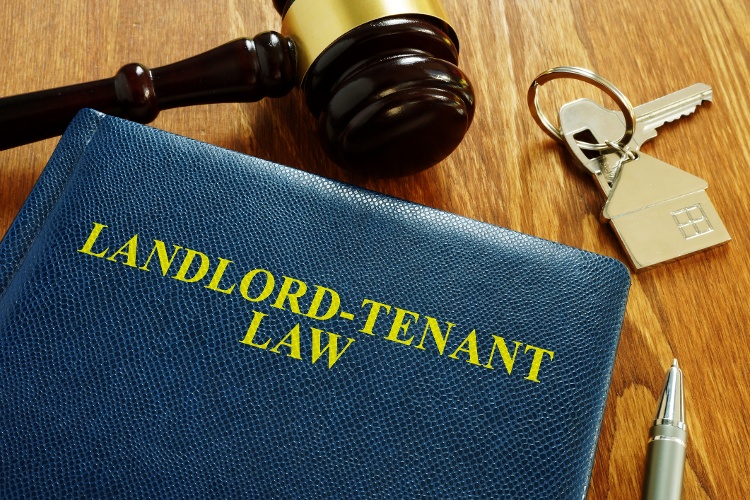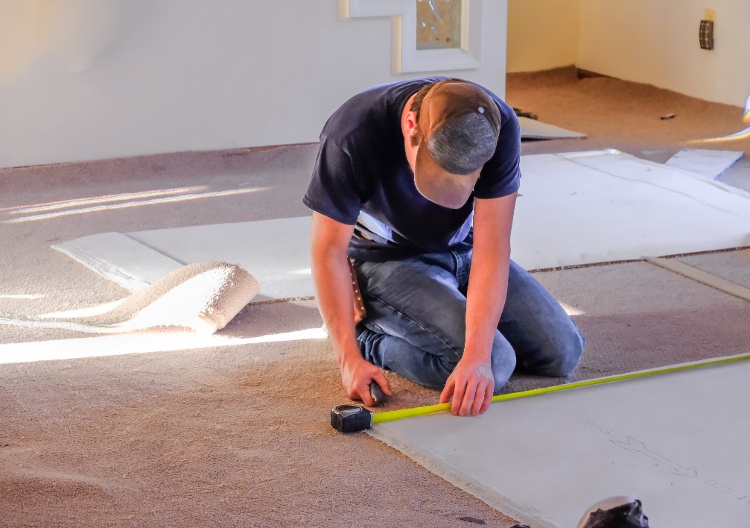Randy owns a single-family rental property in San Antonio.
When his tenants first moved in, he walked the tenants through the property as part of the move-in inspection, explained to the tenants their responsibility for keeping the home in good condition, and took photos of places where the carpet was beginning to show signs of wear and tear.
Even though the tenants had a great credit score and rental history report, when the tenants moved out there was a burn mark on the carpet and a large visible wine stain from last New Year’s Eve.
Although Randy screened the tenants thoroughly and set the right expectations with the tenants when they moved in, accidents do happen. Carpets cost a lot of money to replace and now Randy wants to collect the cost of replacing the carpet from the tenant.
But even though he wants to charge the tenants, is he legally entitled to do so?
Keep reading to learn when a landlord typically can and can’t charge for carpet replacement, and how to potentially use the tenant’s security deposit to pay for the cost of replacing a carpet.

Does a landlord have to replace the carpet?
According to the Legal Information Institute at Cornell Law School, under the Implied Warranty of Habitability, landlords must keep the property habitable even if the lease doesn’t require specific repairs. In order to make it easier for tenants to get landlords to make repairs, the warranty makes the tenant’s duty to pay rent conditional on the landlord’s duty to maintain a habitable living space.
So, while a landlord does not have to replace carpet, the responsibility for doing so depends on 3 factors:
- How the lease agreement is written
- How the condition of the carpet affects habitability
- If the carpets in the home make the property unlivable
Who pays for replacing the carpet?
However, even if a landlord has to replace carpet, that doesn’t necessarily mean the landlord has to pay for the carpet replacement.
The cost of carpet replacement runs between $2 to $8 per square foot installed, as of this writing (June 2021). Replacing the carpet in a 1,500 square-foot rental home would average $7,500. Depending on your gross rental income, you could have negative cash flow for 6 months or more because of the carpet replacement expense.
That’s why landlords charge the tenant for carpet replacement if they possibly can. Now, let’s discuss when a landlord can not charge for replacing the carpet, and when the landlord might be able to recover all or part of the cost of carpet replacement from the tenant.
What is normal wear and tear for carpets?
A landlord can’t make a tenant pay for replacing items that wear out due to normal wear and tear.
The concept of “wear and tear” is based on the “useful life” rule. The rule states that assets such as a refrigerator, stove, dishwasher, paint, window coverings, and carpet only last for so long.
Examples of normal wear and tear
- Doors not closing properly, loose hinges or door handles
- Faded interior and exterior paint
- Minor holes in the walls from where pictures were hung
- Rust in an oven or accumulated grease in a stove hood exhaust
- Corroded shower rods, drains, or bathtubs
- Slow running drains from a buildup of debris in the pipes
- Leaking toilets or faucets
- Worn kitchen countertops
- Vinyl or wooden flooring with minor scratches
- Carpet with moderate dirt or minor stains from normal use
How long does carpet last?
IRS Publication 527 states that carpet in a residential rental property wears out after 5 years, at least for tax purposes, based on the general depreciation system. That doesn’t mean the carpet has to be replaced every 5 years. But, the depreciation period for carpet does provide a guideline of what carpet normal wear and tear would be.
When a landlord has to pay
Assume a tenant moves in when the carpet is 5 years old and moves out 2 years later. There’s a burn mark caused by a fallen candle where the living room sofa used to be, and the carpet also has red wine stains in the center of the room.
Because of the age of the carpet, a landlord would have to pay for the carpet replacement even though the damage to the carpet is arguably beyond normal wear and tear.
How to charge a tenant for carpet replacement
Now let’s look at the same scenario with a slightly different timeframe.
If the tenant moved in when the carpet was 3 years old and moved out one year later, the landlord could charge the tenant for the remaining one year of useful carpet life. If the original cost of the living room carpet was $1,200 the tenant could be liable for $240 in carpet damage.
Using a pro-rata charge is one of the most common and fairest ways to collect money from the tenant for carpet damage beyond normal wear and tear. Imagine if a landlord charged the tenant for the entire replacement amount of $1,200 and the tenant hired a lawyer and took the landlord to court.
The tenant’s lawyer would argue that even though the landlord has benefited by deducting the carpet depreciation from his taxes each year, the landlord still wants the tenant to pay for the entire replacement amount. That’s patently unfair - and a judge would likely agree - even in states that are very landlord-friendly.
Depending on the state landlord-tenant law, the landlord could be held liable for double or triple damages for misusing the tenant’s security deposit to pay for the entire cost of replacing the carpet.
How to use a security deposit for carpet replacement
If the carpet needs to be replaced due to damage caused by the tenant beyond normal wear and tear, a landlord can withhold all or part of the security deposit. Be sure to double-check with your local real estate attorney and landlord-tenant laws, then follow these steps:
Step #1: Take photos
A landlord should take photos of the condition of the property during the move-in inspection, regular routine property inspections, and during the move-out inspection. These pictures will serve as evidence of existing wear-and-tear and serve as proof that unusual damages to the carpet such as burn marks, oil stains, or pet urine were caused by the tenant.
Step #2: Calculate actual cost of carpet damage
Suppose the tenant caused irreparable damage to a 4-year-old carpet with a useful life of 5 years. If the carpet originally cost $3,000, the tenant’s pro-rata share for the remaining one year of useful carpet life would be $600 ($3,000 original cost / 5-year useful life).
Note that the cost of carpet damage is based on the original cost of the carpet, not what the new carpet would cost. That’s because the tenant is being charged for the remaining value of the carpet if the tenant had not irreparably damaged the carpet.
Step #3: Notify the tenant
Notify the tenant that part of their security deposit is being withheld due to damage to the carpet beyond normal wear and tear. Notification needs to take place before the time to refund the tenant’s security deposit has expired, normally 14 days after the lease ends and the tenant moves out.
The letter from the landlord to tenant for the cost of carpet damage being withheld from the security deposit should include:
- Date
- Landlord or property manager name
- Property address
- Amount of security deposit being withheld
- Description of damages and calculation of pro-rata share of damage
- Indication of the security deposit balance being returned and how paid
Many local real estate attorneys specializing in residential landlord-tenant law offer free notice forms on their websites. You can also download a free 'Letter to Tenant for Damages' from TurboTenant, ezLandlordForms, and the LawDepot.
Can a landlord charge for routine carpet cleaning?
Routine carpet cleaning is generally the landlord’s responsibility and one of the expenses of owning and operating a rental property.
What if the lease agreement states that the tenant has to pay for routine carpet cleaning?
State landlord-tenant law may prohibit a landlord from deducting routine carpet cleaning from the tenant’s security deposit. To recover the cost of carpet cleaning that the tenant agreed to, the landlord would have to take the tenant to small claims court.
Landlords clean the carpet in between tenant turns and sometimes use carpet cleaning as an incentive for the tenant to extend the lease for another year. Compared to replacing the entire carpet, carpet cleaning is relatively inexpensive and may even extend the life of the carpet.
In other words, suing a tenant in small claims court for the minor cost of carpet cleaning probably isn’t worth the time and effort, even if a landlord can do so.
Final thoughts on this topic
Whether or not a landlord can charge for carpet replacement depends on important concepts such as normal wear and tear, useful life, and unusual damage caused by the tenant.
In some cases, a landlord can use all or part of the tenant’s security deposit to pay for carpet damage caused by the tenant, while in other cases the landlord is out of luck.
Depending on the situation, a landlord and tenant may agree to share part of the cost of replacing the carpet, helping to keep repair costs lower and returns higher for a rental property investor.











